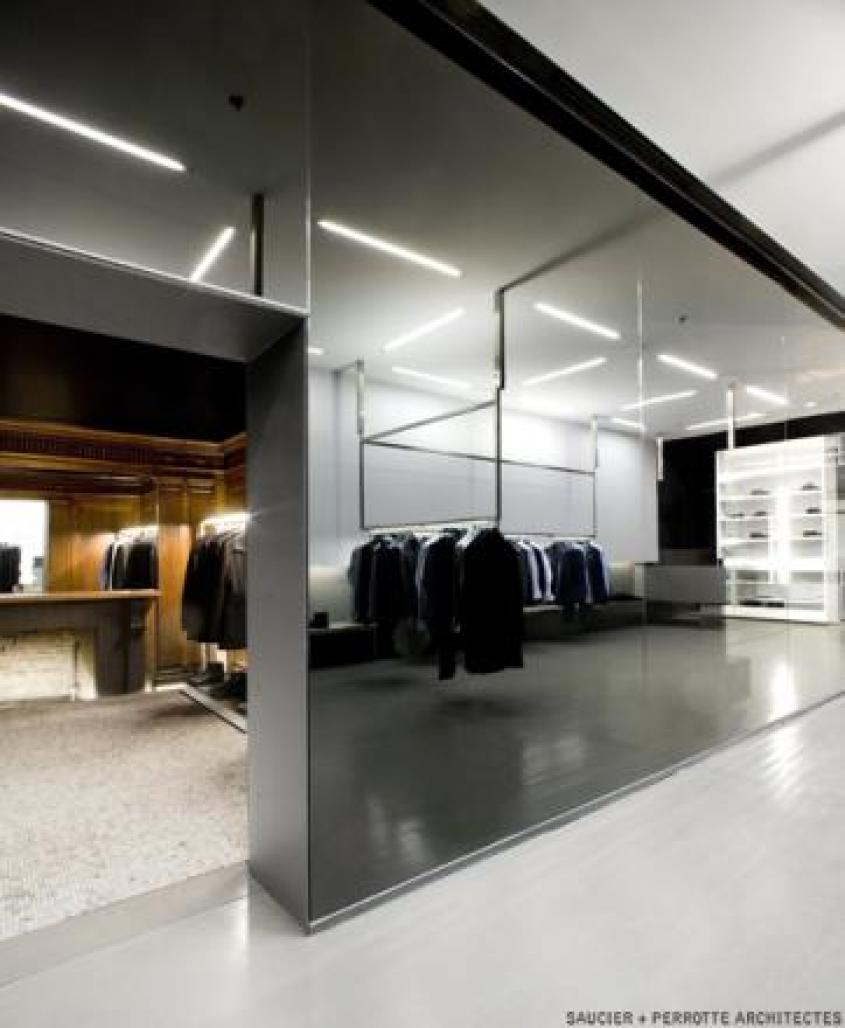MICHEL BRISSON_
A NEW SPACE BY SAUCIER + PERROTTE
Designed by Saucier + Perrotte, the new store has been conceived as a space that simultaneously reflects the quality of the finely tailored garments on display as well as the historic context of the century-old building.
From the entrance of the store, a reflective black wall extends across the pristinely white, minimally modern space. Puncturing this wall is a window that opens onto a 19th century interior, a seemingly rediscovered vestige of the past. Peering toward this bygone era, clients and visitors at once notice the archaic mirror hanging inside, reflecting both spaces back to the observer. In this way, there occurs a striking superimposition of epochs, wherein the historic fabric of Old Montreal and the architecture of the 21st century converge.
Just as in a canvas by 17th century painter Johannes Vermeer, a spatial and temporal exchange takes place through the window between these two disparate worlds. The long, black reflective boundary in turn mirrors the new into the old and this game of visual interaction between periods continues, rendering the space subtly out of focus while offering visitors a glimpse of themselves and the clothing from an alternate perspective.
The appearance of the store from the street is one that is equally evocative. Looking past the old stone façade, passersby catch sight of the immaculate, bright, newly designed space juxtaposed with its darker, antiquated counterpart. The two architectures—one evoking a simpler, old world charm, the other embodying modernity and contemporary fashion—are at once distinct and complementary, forming a unique environment for the shopping experience.
The lighting, also designed by Saucier + Perrotte, innovatively doubles as a suspended system on which to hang clothes. By means of a flexible ceiling grid, multiple spatial and lighting arrangements are achieved for display so that the space itself can be tailored to a variety of special events or collections.
The shelving along the south wall forms a sculptural object—a carved structure for display that can be separated and moved along a track, providing an elegant separation for the ‘visible storage’—clothing which clients can glimpse while browsing—a principle of semi-display used more and more today in major international museums. The idea to treat the garments as artistic pieces is one that both sets apart the clothing as distinct and at the same time heightens the user’s awareness of the materials and couture. Such an approach epitomizes the appreciation of craft and attention to detail that has made MICHEL BRISSON_ a mainstay in the Montreal fashion scene.
2007
2007




.jpg)




